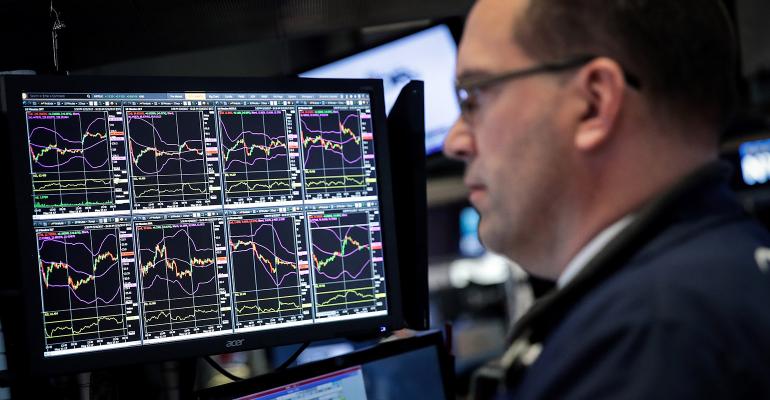The rise of indexing has been undeniable over the last decade. Bombarded by the argument that most active investment managers cannot predictably beat the broader market, investors have shifted to low-cost index mutual funds and exchange traded funds at the expense of funds that are actively managed. Passive funds now account for nearly 40 percent of all U.S. retail fund assets, according to Morningstar. That compares to just 8 percent in 1997.
But a recent study by Martijn Cremers, a professor of finance at the University of Notre Dame, and others challenge the conventional wisdom that active management doesn’t create value for investors. Cremers used Mark Carhart’s 1997 study on the persistence of mutual fund performance as a starting point. Cremers studied over 300 academic papers on the subject since Carhart’s seminal paper.
“We find that over the last 20 years of over 300 academic papers, that active managers have a variety of skills, and we find a lot of evidence that they create value for their clients,” Cremers said. “After costs, many of them actually do generate positive value for investors and therefore active management is much more promising than if you believe the conventional wisdom.”
Carhart, now chief investment officer at Kepos Capital, ranked funds into decile portfolios based on one-year gross return in each calendar year from 1962 to 1992. He found that winners tend to stay winners over the year period, and losers tend to stay losers. However, the top-performing funds vary from year to year, with over 80 percent annual turnover in composition, he said.
According to Cremers, the conventional wisdom has three elements: That the average active fund underperforms the benchmark after taking costs into consideration; that some funds outperform in a given year, but that performance doesn’t persist; and that skilled managers are generally more expensive, so investors don’t benefit from that skill.
Cremers conceded that, when you look at the recent academic literature, there is empirical support that on average, actively managed mutual funds do not strongly outperform over the long term.
But some literature challenges this notion, he said, arguing that the methodology makes assumptions that biases you against finding outperformance.
“The methodology really matters; the data really matters; time periods really matter,” Cremers said. “If you look more at what’s actually accessible in terms of benchmark performance, in terms of tradable portfolios—what are you comparing actively managed portfolios with? You become a lot less confident that the average fund underperforms.”
The conventional wisdom on the persistence of fund performance has been challenged by recent studies, he added. There is strong evidence for performance persistence, using better methodology, better data and higher frequency data. He points to the 2005 paper by Nicolas P. B. Bollen and Jeffrey A. Busse, which found that 10 to 20 percent of top performers seem to have the ability to perform consistently over time.
Many papers challenge the conventional wisdom that skilled managers are more expensive. For example, in 2009 Cremers wrote a paper with Antti Petajisto introducing “active share,” a basic tool that compares holdings of funds to the holdings of the benchmark.
“The point that we make is that many funds that say that they’re very active may not be that different from their benchmarks,” Cremers said. “Among the high active share funds, there’s actually strong evidence, we argue, that there’s no underperformance—perhaps even outperformance. Among the low active share funds that are not cheap, there’s very strong evidence that investors do not benefit after costs.”
Cremers points to other limitations of conventional wisdom. Most of the research only looks at U.S. actively managed mutual funds.
“That may be the least persuasive market to consider the power of active management because the U.S. equity markets are dominated by large caps that are arguably in a very efficient, very competitive market,” Cremers said. “Once you go outside U.S. large caps—you go to small caps, you go to bond funds, you go to hybrid funds, international funds, emerging markets, hedge funds—arguably those environments may be more promising.”
“Most fixed income managers are overweight credit; we own lots of yield,” said David Lafferty, chief market strategist at Natixis Investment Managers. “And when we out-yield the benchmarks and credit does well, we do well. When credit falls out, active managers do poorly.”
The Teacher Retirement System of Texas, a public pension plan, recently found that its international developed managers had excess returns at or above their target levels while U.S. managers had terrible results. So the plan completely shut down its internally managed U.S. equity portfolio, $4 billion of which went into passive strategies until they figure out what to do.
That’s not to say the institutional investor has given up on stock picking.
“TRS believes in active management,” said Scott Gonsoulin, investment manager at the pension fund. “We just think there are nuances in the active/passive debate that we have to be willing to acknowledge—like active management working better in some places and us having to potentially utilize more factor-based strategies in other places.”
Another limit to conventional wisdom is that academics disagree on how to evaluate these funds, Cremers said.
“We haven’t been able to have a consensus model for performance evaluation,” he said. “So many different papers will do their own thing.”





